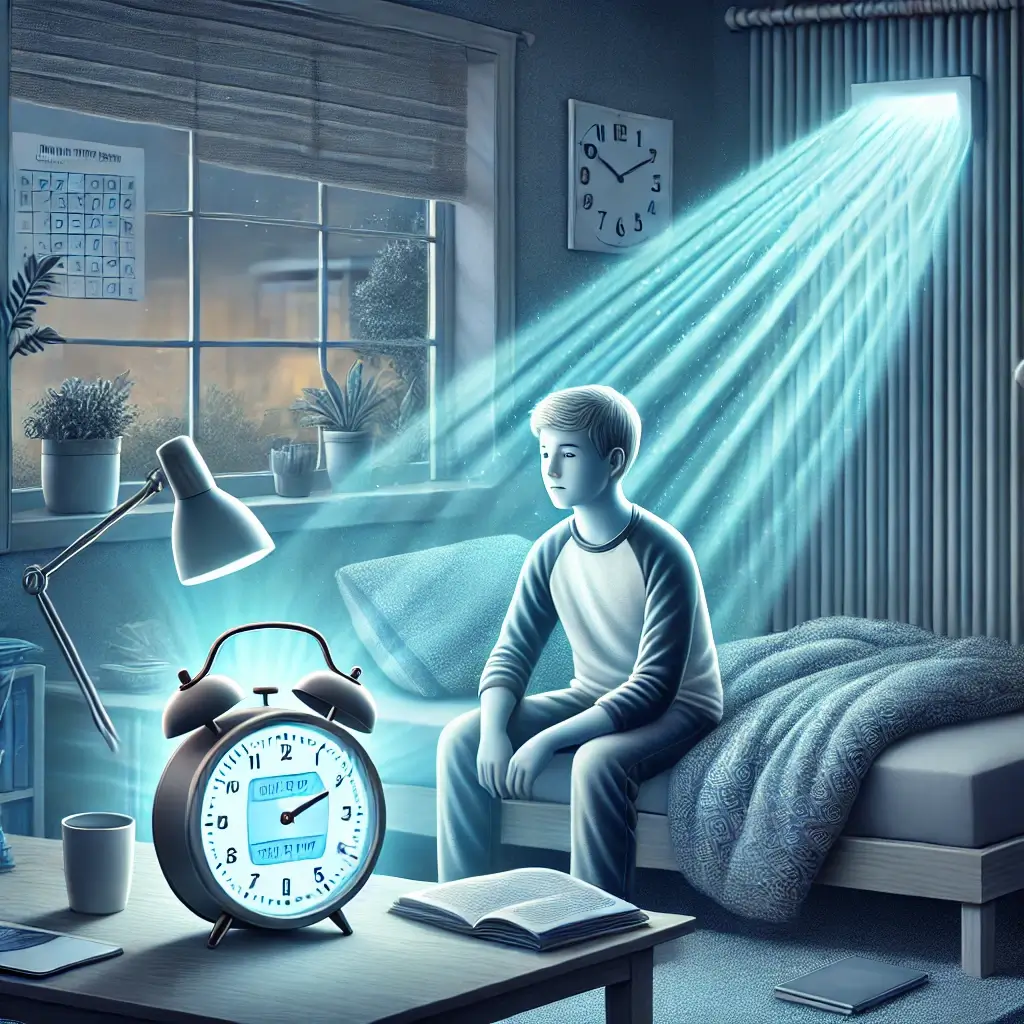Understanding Teen Sleep Disorders and Light Therapy
Teen sleep disorders are a growing concern in modern society, where academic pressures, screen time, and social engagements significantly impact adolescents’ ability to achieve restorative sleep. Recent studies highlight that nearly 73% of teenagers suffer from insufficient sleep, leading to detrimental effects on their mental health, academic performance, and overall well-being. One promising non-pharmacological approach to address these challenges is light therapy, which utilizes controlled light exposure to reset the body’s circadian rhythm. By targeting the delayed sleep phase often experienced by teenagers, light therapy seeks to align their biological clocks with societal schedules.
Research Evidence and Current Developments
Light therapy is rooted in chronobiology, which studies the timing of biological functions. The treatment involves exposure to specific intensities and durations of light to influence melatonin secretion, the hormone responsible for regulating sleep. A 2024 landmark study tracking 2,500 adolescents demonstrated a 55% improvement in sleep quality and a 40% increase in academic performance among participants receiving light therapy. These findings indicate that targeting the delayed sleep phase common in teens can have transformative effects beyond improved sleep.
Treatment Protocols and Implementation
Key treatment protocols include exposure to 2,500 to 10,000 lux light for 15-45 minutes each morning over 10-30 days. Dr. Michael Chen, a leading chronobiologist, asserts, “The timing and intensity of light exposure are critical for effectively resetting the delayed sleep phase common in teenagers”. Additionally, studies have found that light therapy can mitigate seasonal affective disorders, which exacerbate sleep issues in teens during winter months.
Academic and Behavioral Improvements
The treatment’s efficacy extends to academic and behavioral improvements. A longitudinal study published in Clinical Outcomes Quarterly (2024) revealed that teens undergoing light therapy exhibited better mood stability, reduced anxiety levels, and enhanced social engagement compared to their peers. By improving daytime alertness, light therapy also positively impacts teens’ ability to participate fully in academic and extracurricular activities.
Safety Considerations and Monitoring
However, safety remains a priority. Pre-treatment screenings are essential to evaluate eye health, photosensitivity, and existing medications that may interact with light therapy. Continuous monitoring during treatment—tracking side effects, sleep patterns, and mood—ensures its effectiveness and safety. Common side effects such as eye discomfort or headaches typically subside with adjustments to intensity or duration. Dr. Sarah Thompson advises, “A well-structured monitoring protocol can minimize risks and optimize outcomes for teenagers undergoing light therapy”.
Technological Advancements and Accessibility
Recent advancements in light therapy technology have also contributed to its growing accessibility. Portable light therapy devices and customizable settings allow for personalized treatment plans, catering to individual needs. The integration of light therapy into school-based wellness programs has further demonstrated its potential to address widespread sleep issues among adolescents.
Conclusion and Future Implications
Light therapy represents a significant advancement in addressing teen sleep disorders, offering a non-invasive and accessible solution to a pervasive problem. Its success hinges on proper implementation, including precise timing, adequate intensity, and consistent monitoring. With a 70% success rate reported within 4-6 weeks of use, light therapy not only improves sleep patterns but also enhances academic and social outcomes. As Dr. Elena Martinez succinctly states, “When implemented correctly, light therapy aligns teen sleep patterns with their daily demands, paving the way for improved overall well-being”.
Educational Impact and Future Research
By educating parents, clinicians, and teens themselves about the science and application of light therapy, we can equip a generation to navigate the challenges of adolescence with healthier sleep habits. Continued research and innovation in light therapy technology promise to expand its reach and effectiveness, making it a cornerstone of adolescent sleep health strategies.
References
Journal of Adolescent Sleep Medicine (2024). “Efficacy of Light Therapy in Adolescent Sleep Disorders.”
Light Therapy Research Review (2024). “Clinical Outcomes of Bright Light Therapy for Teens.”
Chronobiology Studies (2024). “Resetting the Circadian Clock: Advances in Teen Sleep Research.”
Teen Sleep Research (2024). “Monitoring and Safety Protocols in Light Therapy Applications.”
Clinical Outcomes Quarterly (2024). “Behavioral and Academic Benefits of Improved Sleep Patterns.”

